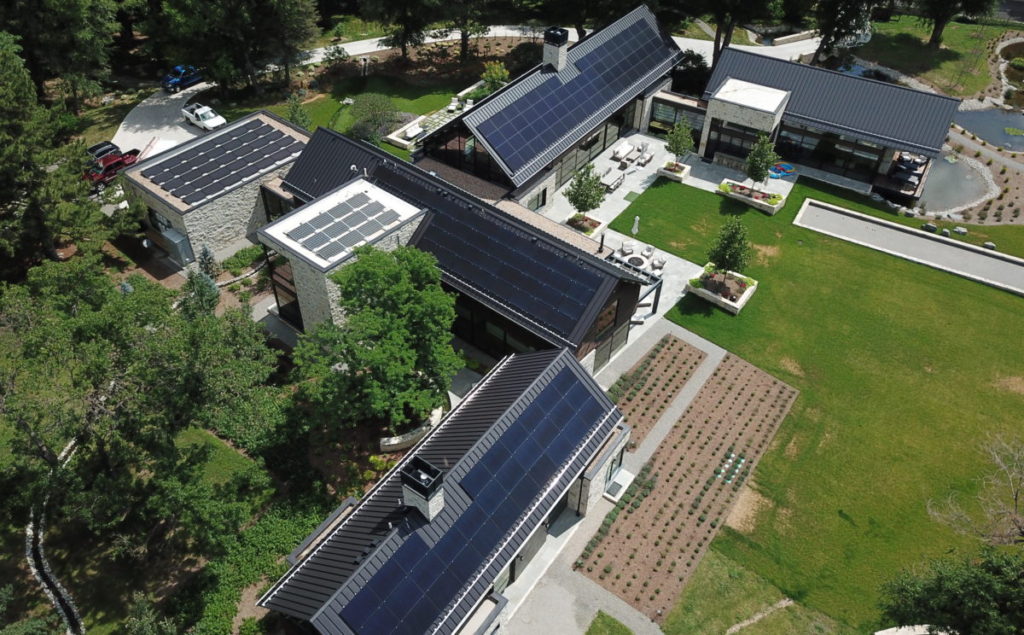Can community microgrids fill the gap in California’s plans for 100% renewable energy?

A 10 MW, 40 MWh storage project on the Southern California coastline could provide the first link for a string of community microgrids that, according to the Clean Coalition’s Craig Lewis, could show that high penetrations of distribution-connected solar are entirely doable.

The Goleta load pocket is a 70-mile stretch of Southern California coastline that includes the cities of Santa Barbara, Carpinteria and Goleta — combined population around 220,000 — all served by one 220-kV transmission line snaking its way over 40 miles of mountainous terrain.
It’s a setup that makes electric reliability and resilience almost impossible, said Craig Lewis, founder and executive director of the Clean Coalition, a Santa Barbara-based nonprofit focused on promoting locally generated clean energy.
“Energy coming from afar is never going to be resilient,” Lewis said during a recent interview with pv magazine. “When you’re subjected to a long supply line, it doesn’t matter whether you’re talking electricity or gas or whatever — that supply line goes down, you’re dead.”
A Santa Barbara native, Lewis has a big vision for ensuring secure, renewable power for the region — a series of community microgrids that can provide at least 25% of local electricity demand, keeping the lights on if the transmission line were to go down. The 10 MW, 40 MWh Vallecito energy storage plant — which recently cleared the last of several local permitting approvals — is a potential core element, located near a school and commercial buildings with “tremendous solar siting opportunities,” he said.
Calling Lewis a passionate advocate of storage or community microgrids would be a significant understatement. Ask him what you think is a fairly straightforward question, and you will get a lecture covering historical background, technical overview and economic and environmental analyses, complete with multiple slide presentations.
But in the midst of California’s latest round of heat waves, wildfires and rolling blackouts — and the state’s progress toward its 100% clean energy goals — his points hit home.
With its grid-edge location and resulting vulnerability to power outages, the Goleta load pocket is almost made to order for non-wires solutions — like microgrids — that don’t require expensive upgrades to distribution or transmission wires. Lewis also makes building out such non-wires projects sound straightforward and completely doable.
Borrowing baseball terminology, he said, the “magic number” to ensure resilience for the load pocket is 200 MW of solar — primarily commercial installations — and 400 MWh of energy storage.
“In order to get the 200 MW, we would need about 7% of the technical siting potential,” he said. “That means we need one out of every 15 rooftops and parking structures.”
The move away from natural gas peakers
On the storage side, the Vallecito project is an anchor, the first of a seven-project pipeline — totaling 70 MW, 280 MWh — that Southern California Edison (SCE) has procured for the region. All the projects have been approved by the California Public Utilities Commission (CPUC), but Vallecito is the first to make it through a rigorous local approval process, hopefully making it easier for those to follow, Lewis said.
Ormat Technologies Inc. originally developed the project in response to SCE’s open call for storage proposals in the wake of the Aliso Canyon natural gas storage leak and subsequent shutdown in 2015. The CPUC had ordered SCE to procure at least 20 MW of storage to offset any resulting power shortages in the region, which included the Goleta Load Pocket.
Now scheduled to go online by the end of the year, Vallecito will use Tesla Megapack storage units, according to Mark Stout, director of business development for Viridity Energy Solutions, an Ormat subsidiary. While Ormat’s 20-year contract with SCE is primarily for resource adequacy — that is, ensuring capacity — the project will also be able to sell into wholesale day-ahead markets and help with integrating more renewables on the grid, he said.
The project also represents another step in California’s ongoing move away from reliance on natural gas peaker plants to back up intermittent wind and solar. SCE had previously proposed ensuring power capacity in the load pocket by refurbishing a 54-MW natural gas peaker plant in Goleta — a plan that was shot down by the commission in 2017.
As part of the local opposition to the refurbishment, the Clean Coalition produced an analysis, arguing that solar and storage could provide the power needed at about half the cost. The 2017 Thomas fire in Santa Barbara County and SCE’s preventative power shut-offs during last year’s wildfire season have also underlined the region’s need for the local resilience that microgrids can provide, Lewis said.
But progress has been incremental. The Clean Coalition’s plan for a microgrid at the University of California, Santa Barbara has yet to move beyond an initial study, and similar plans with the Montecito fire department and school district are moving slowly. The area’s first microgrids could well be built by the Santa Barbara Unified School District, which recently issued a request for proposals that included six microgrids capable of two to six hours of off-grid backup power.
Still, Lewis remains convinced that community microgrids with commercial-scale solar will be critical to California reaching its 100% clean energy target by 2045.
“We believe 25% of that renewable energy will be from local sources interconnected within the distribution grid,” he said. “The unsung market segment for solar is commercial — behind the meter, in front of the meter, it doesn’t really matter — utilizing those built environments, rooftops, parking lots, parking structures. We want to show everyone that we can get to very high penetrations of local renewables in the form of community microgrids. It’s not an impossible task.”

